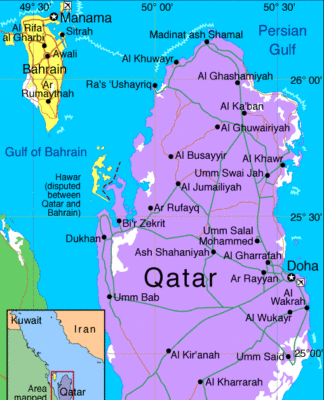SOCIETYINDIA
India to overtake China as world’s most populous country: UN
8 hours ago8 hours ago
By the middle of the year, if not sooner, India will have the most people of any country in the world, new UN estimates show. Asian giants China and India alone account for almost 3 billion of 8 billion people worldwide.
https://p.dw.com/p/4QH9H
India is on course to overtake China as the most populous country on the planet by the second half of the year, new UN estimates published on Wednesday predict.
The United Nations Population Fund’s six-monthly State of World Population report estimated India’s population would be 1.4286 billion compared to China’s 1.4257 billion at the end of June.
That would make India’s still-growing population around 3 million larger than that of China, which recorded its first year of negative population growth in decades in 2022.
The report also put the global population by the end of June at 8.045 billion, with India and China accounting for roughly 2.85 billion by themselves.
People walk in a crowded street of Chandni Chowk market on November 15, 2022 in New Delhi, India.People walk in a crowded street of Chandni Chowk market on November 15, 2022 in New Delhi, India.
India has been on course to overtake its neighbor China for some timeImage: Vijay Pandey/ZUMA Press/picture alliance
Inexact Indian estimates amid COVID-delayed census
The science behind the studies is necessarily inexact, and some other estimates suggest the changeover may have already happened — but there’s long been consensus that the handover was imminent.
UN population officials have said it is not possible to provide a specific date because of “uncertainty” about the data.
The Indian government’s last official census was in 2011, meaning figures on its population are estimates. And even China’s recent official figures could be subject to a margin of error.
India’s 2021 census was postponed with Prime Minister Narendra Modi’s administration citing the COVID-19 pandemic.
Since then, the delayed process has become bogged down in logistical hurdles and even allegations of the government looking to stall until the next elections in 2024 are complete.
But since 1950, India’s population has risen more than threefold, from estimates of around 360 million to today’s figure approaching 1.5 billion.
India’s economic clout remains more undersized than China’s, though, with its GDP roughly equivalent to that of the UK and France, both with populations closer to 65 million people.
China’s first year of negative population growth in decades in 2022
China’s rapid population growth rise from 580 million in a 1953 census through to 1.4 billion by 2018 has been showing signs of flattening out for years.
The government in Beijing famously halted its one-child policy, implemented at the peak of population growth to try to keep the numbers in check, in 2015, establishing a two-child limit.
Nurses take care of newborn babies at a hospital in Yongzhou, central China’s Hunan Province, May 12, 2022. Nurses take care of newborn babies at a hospital in Yongzhou, central China’s Hunan Province, May 12, 2022.
For decades, China enforced a strict one-child policy in a bid to rein in population growth; now couples are permitted to have up to three children but the country is struggling to encourage higher birth ratesImage: Jiang Keqing/Xinhua/picture alliance
In 2021, China then said that families would be permitted to have three children, as figures suggested comparatively few people taking up their opportunity to have more kids.
This process culminated in last year’s public census data, which showed the first year of population decline in decades.
People in China now live in a society, as do around two thirds of the world’s population, where population levels are more or less stable.
From 2 billion worldwide to 8 billion in less than a century
Population increases in both the Asian giants roughly mirror the rapid global population growth of the last 100 years.
Estimates suggest the world’s population had reached 2 billion people by the late 1920s before spiking sharply from around 1950 to 2010.
Now at roughly 8 billion worldwide, the UN predicts it will rise more slowly in the coming decades to somewhere in the region of 10 or 11 billion before likely leveling off.
By 2050, the UN estimates that just eight countries in Asia and Africa — the Democratic Republic of Congo, Egypt, Ethiopia, India, Nigeria, Pakistan, the Philippines and Tanzania — will account for over half of the remaining growth.
However, in one sense in particular, the pace of the increase can appear misleading. Global average life expectancy as recently as 1950 was just 45 years. Now it is more like 73. With this change most pronounced in the developing world, individuals living longer contributes to more different generations (and therefore more people) still being alive for any given count.
The boom in megacities
04:52
UN warns of ‘alarmist’ overpopulation narrative
The United Nations Population Fund (UNFPA) on Wednesday warned against perceiving this rapid growth too negatively, saying it was in no small part a sign of humanity’s recent success.
It said that concerns of numbers of people were “causing anxiety, and driving more governments to try to influence fertility rates.”
It said the most important question, also from the standpoint of development and advancement, was not how many children a woman had or when, but whether the decision was truly hers.
“The relationship between reproductive autonomy and healthier lives is an uncontested truth,” UNFPA executive-director Natalia Kanem said in her foreword to the report. “As women are empowered to make choices about their bodies and lives, they and their families thrive — and their societies thrive as well.”
Still today, the UN said roughly 24% of women and girls worldwide said they felt they could not say no to sex, and 11% were unable to make decisions over contraception.
Gender parity was particularly important for low-population-growth economies, ensuring more women were available to fill likely vacancies in labor markets.
Kanem lamented that this had not been the response to November’s update on the global population hitting 8 billion.
“Instead, many headlines warned of a world teetering into overpopulation,” she said, leaving the rights and potential of individuals to “fade into the background.”
The UN also said that the issue’s impact on climate change was often exaggerated.
“Furthermore, blaming fertility rates for climate change, will totally fail to hold the greatest carbon emitters to account,” the UNFPA wrote. “Out of 8 billion, 5.5 billion simply don’t make enough money to influence carbon emission increases.”
That said, China’s carbon emission development in recent decades — now comfortably first in terms of overall emissions and second in terms of cumulative historical emissions behind the US — offers a glimpse of how that can eventually change with the modernization also predicted in the years to come.
msh/nm (AFP, Reuters)






























